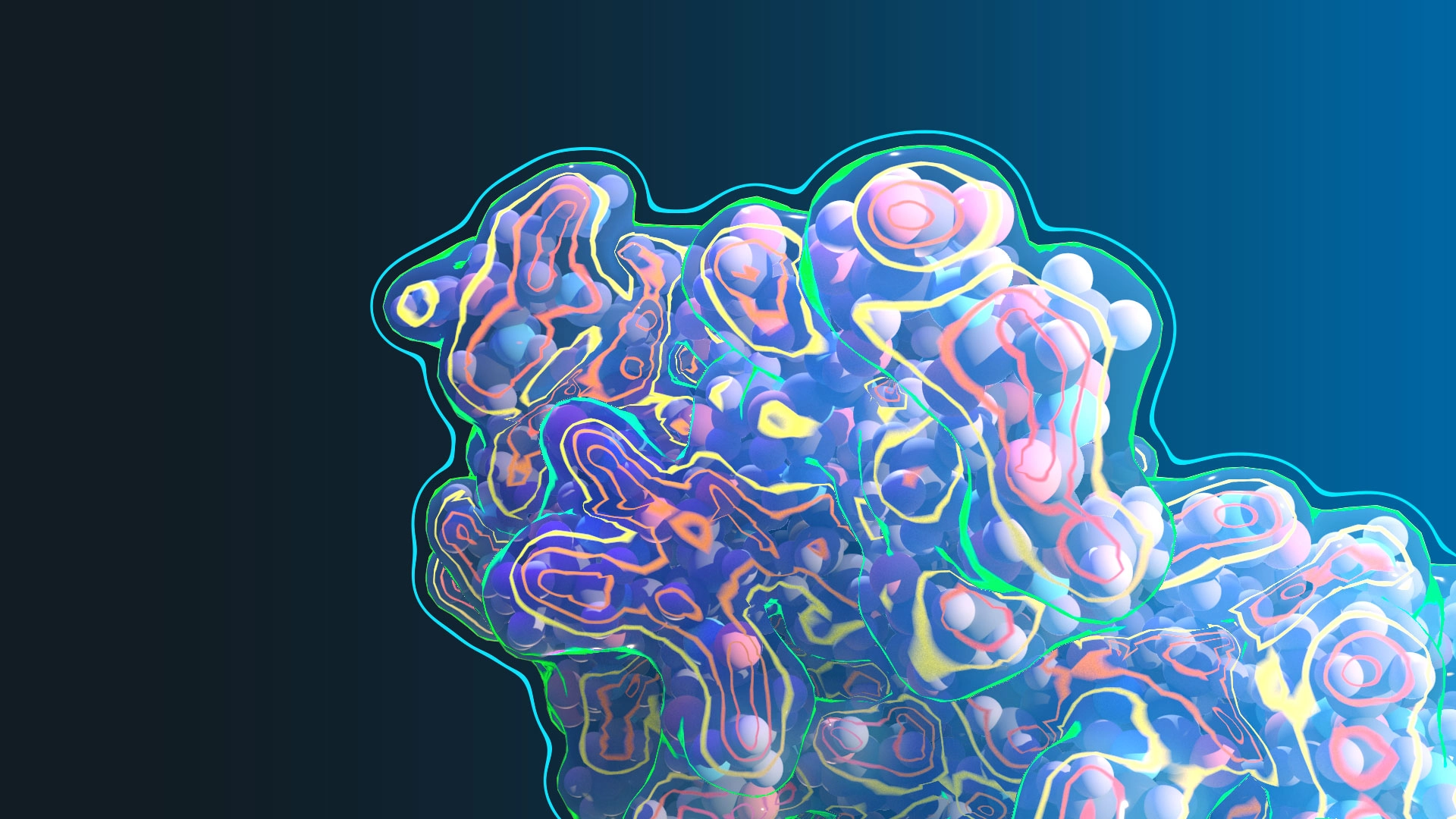Quantum mechanics, or quantum physics, describes nature at the fundamental level of atomic nuclei and electrons.
Quantum mechanics is the most accurate way to simulate the behavior of molecules and interactions between molecules and allows us to predict with remarkable accuracy the complex biomolecular interactions critical to biological systems. We deploy quantum physics methods to tackle the challenges in protein targets previously thought to be “undruggable,” yielding the most accurate predictions and facilitating our mission to deliver new safe and effective medicines to patients.
Building on Ground Truth
By building on the foundation of quantum mechanics, we are operating based on ground truth for how biological systems work at the molecular level. This approach allows us to move beyond static representations of biological molecules like proteins and ligands. Atomic interactions are driven by a balance of entropy and enthalpy, captured by a thermodynamic quantity known as Gibbs free energy, which can be computed using molecular dynamics and statistical thermodynamics.
In the complex world of human biology, the Gibbs free energy is the ultimate arbiter of conformational states and defines the energetic landscape that makes biology possible. By accurately predicting the Gibbs free energy through the lens of molecular dynamics and statistical thermodynamics, scientists at Psivant assess the full role of protein motion and dynamic interactions between biomolecules to overcome critical bottlenecks in the drug discovery process.
Biology, Atom-by-Atom
The complexity of protein-sized molecules prevents full quantum mechanical simulations from being run directly on biologically relevant systems. Our industry-leading approach applies the appropriate level of theory to strike a balance between throughput and accuracy. We employ:
- Quantum physics to understand the properties of potential drug molecules.
- Molecular dynamics and statistical thermodynamics to predict how potential drug molecules bind to and modulate therapeutic protein targets.
- High-performance computing and software engineering to make accurate predictions at scale.
This approach results in a clearer understanding of the biological system and the relationship to disease at an atomic level.
